- Administrator
- Albums and Singles
Mere months after his Black Eagle Child full-length, Lobelia, appeared on Preservation, Milwaukee, Wisconsin-based Michael Jantz returns with Pages On A Plane, an equally satisfying twelve-inch vinyl outing for Under The Spire. It's modestly ambitious in scope, with thirty-six minutes of music split across the disc's sides and available in an edition of 250 copies on marbled vinyl. Outdoor field recordings bolster the music's natural feel, with Jantz creating luscious tapestries of picked guitar patterns whose clean lines register as cool and refreshing breezes; his is a music, in other words, free of lugubriousness or oppressiveness. The spaciousness expressed in “I Am A Bunny,” for example, can make one feel as if one is standing out in an open field breathing in the country air.
The opening track, “The Lost Button,” is one of the album's most appealing, as Jantz builds the individual layers into a sparkling web of quiet, sun-dappled radiance. During both “The Lost Button” and the second piece, “Spring,” Jantz generates a striking degree of contrast between the chiming guitar picking and e-bow-like accents that gradually emerge. Side B's “Long Reflector” cultivates a pastoral and dream-like mood with Jantz weaving the guitar parts into a gently pulsing whole, the cumulative effect rather like slivers of sunlight breaking through trees in a forest. The album's sole misstep arises during “Cycle to the Moon” where the presence of drumming conventionalizes the Black Eagle Child sound by anchoring it too solidly when it succeeds best when allowed to float freely. Even so, Jantz has built up an impressive catalogue of releases (many of them cassette-only) in three years' time, and Pages On A Plane is certainly a more than credible addition to his discography. Don't be misled by the achromatic cover photo: this is music rich with colour, whether it be autumnal yellow-oranges or leafy blue-greens. - Textura. August 2011
200 copies available on marbled vinyl on PVC sleeve from Under The Spire Recordings
http://www.underthespire.co.uk/releases-buy/black-eagle-child-pages-on-a-plane/
Read More
- Administrator
- Albums and Singles
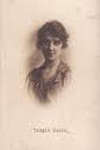 This offering on the altar of music is a mesmeric slow burner. It goes to work on me like a time released medication. Strains of flute, bells, and synthesizer swirls gradually encompass me, infecting my blood stream with their calmness, before the levels are elevated into a heady pulsating crispness. Temple Music is an offshoot project started by Alan Trench of the British dark folk band Orchis and an ex-proprietor of the now deceased World Serpent label. After his first Temple Music release he was joined by Stephen Robinson. Together, on this limited release of 300, (distributed by AntiClock Records in the US, purveyors of fine titles from Language of Light, Ctephin and others), they have created an immersive sound-world blending elements of ritualistic drone, string band like avant-folk, and moments of blistering krautrock assaults. There are four movements on the disc, mixed as one continuous hour long piece.
This offering on the altar of music is a mesmeric slow burner. It goes to work on me like a time released medication. Strains of flute, bells, and synthesizer swirls gradually encompass me, infecting my blood stream with their calmness, before the levels are elevated into a heady pulsating crispness. Temple Music is an offshoot project started by Alan Trench of the British dark folk band Orchis and an ex-proprietor of the now deceased World Serpent label. After his first Temple Music release he was joined by Stephen Robinson. Together, on this limited release of 300, (distributed by AntiClock Records in the US, purveyors of fine titles from Language of Light, Ctephin and others), they have created an immersive sound-world blending elements of ritualistic drone, string band like avant-folk, and moments of blistering krautrock assaults. There are four movements on the disc, mixed as one continuous hour long piece.
At the beginning of the first movement, "There Is No Light And I Cannot Get Out," a female voice announces "The fountainhead decays," but from my point of view this has nothing to do with the desultory works of Ayn Rand, unless it is a comment on the bankruptcy of her philosophy. The voice continues, at intervals throughout the disc, reading a poetic text in a voice suitable for a guided meditation. Not that her words aren’t enunciated with enthusiasm, just that dynamically they remain at a consistent volume and tone. Lisa and Tracy are given credit for the vocals, but they are blended with such skill I couldn’t tell one from the other.
Electric guitar pickings and a dense drone pull listeners in on their stream of consciousness meanderings, while a slow bass throb fills out the bottom end. Sprinkles of bells add a perfume of mystery which further emerges in the vaporous trills of a flute or recorder. I begin to get the sense that I am outside somewhere at night, perhaps near a secret grotto, or approaching a sacred grove: samples of crickets or other nocturnal insects oscillate between the left and right speakers, forming a murmuring foundation. Slow LFO sweeps and mournful arpeggio begin to susurrate as the movement fades out, the illustrious tour guide announcing I am "in a dream."
Synth and bells push things along again in "Your Children Are Our Future." This is the most sinister sounding part of the whole album. Doors creak, electronics crackle. The innocence of childhood is not so much present as is a host of adult fears and uncertainties. Eventually guitars and other plucked instruments return, as if to dispel the darkness which had been conjured. The music picks up speed in the raucous "House In The Snow." It still starts off ominous, the warbling electronic backdrop accompanied for a time only by the chittering insects. Drums, provided by Kosmicheboy, fill out the palette nicely at a time in the album that otherwise could have been boring, if the pace hadn’t changed. A sense of urgency is also finally emerging from the chords of the vocalist. Amidst all the myriad transformations and movements here, the lyrical recitation is a constant thread winding through the maze.
The last movement has the appropriate title "Soon Death Come." If the voices are a string, here that string become unraveled, slowly overwhelmed by majestic guitar chords and shimmering synthesizer, which leads outwards from the labyrinth of life, into the white light of death. In this setting, death isn’t scary, something to be feared, but a release, a letting go. Smatterings of a steam like hiss, or of train wheels grinding on the rails, seep towards the foreground at the very end, leaving the station, traveling off into unknown worlds.
samples:
 
Read More
- Administrator
- Albums and Singles
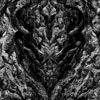 From the album art and band title, I was expecting something more black metal-ly than I got with this album, which is a good thing. Considering this duo's first album was titled This Beat Is Necrotronic, I should have guessed that they weren't going to be playing by genre rules, and here the occasional bit of fuzzed out kvlt guitar is mostly balanced by dubby beats and textural synths, channeling the mid/late '90s ambient dub scene with distinctly current approach.
From the album art and band title, I was expecting something more black metal-ly than I got with this album, which is a good thing. Considering this duo's first album was titled This Beat Is Necrotronic, I should have guessed that they weren't going to be playing by genre rules, and here the occasional bit of fuzzed out kvlt guitar is mostly balanced by dubby beats and textural synths, channeling the mid/late '90s ambient dub scene with distinctly current approach.
I love records with this kind of schizophrenia, bouncing between downtempo breakbeats, electronic noise, and a bit of industrial here and there without a care in the world.However, these disparate pieces fit together nicely, so this isn’t a matter of just throwing shit together and seeing what sticks.It’s actually only when the sound gets a bit locked in to one genre that I feel this album drags.
Opening "Jaffanaut" and "Devastating Vector," for example, channeled that mid-period Scorn sound of clean beats and grinding, ugly synth sounds.However the former adds some stabby black metal guitar bursts to create a vibe that somehow manages to convey "funk" over all the traditionally non-funky instrumentation.The latter keeps the stuttering loops of Mick Harris' work, but fleshed out with a more lush electronic backing, even pushing into old school electro territory.
The metal sound becomes more of a dominant vibe on tracks like "In Binary," where even though it opens with bleak synths and slow beats, it develops into a beast of huge guitars and screamed vocals.It never loses its synthetic edge, but the guitar sound definitely becomes the focus."Temple of Juno" is a bit more variable, alternating between loop-focused old school electronic dub and doom metal in a contentious battle that neither side manages to fully dominate.
Personally, I was a bit surprised and also enamored at tracks like "For Your Own Good," which is the closest song to a single this album has.The stiff drum machine beats and actual singing moments are met with an almost rock vibe that sort of reminded me of Scorn's Colossus with a more contemporary post-rock leaning."Blizzard" also embraces the mid/late 1980s sensibility, meshing an almost danceable beat with abrasive, noise tinged textures and sensibilities.
The only track I thought lagged behind on this disc is "The Heat Death of Everything," which adhered a bit too closely to traditional black metal norms to catch my attention.While there’s nothing wrong with it per se, there weren’t enough out-of-left-field moments or odd juxtapositions to keep my attention.It’s a competent take on electronic black metal, but there’s not much else to say about it.
As a whole, Music of Bleak Origin does an excellent job of crossing genre boundaries in creating a sound that can't be easily labeled or categorized, which is something should strive for.Dark without being cliché, metal without being tied to convention, and electronic with an organic soul, it's a great combo to be heard.
samples:
 
Read More
- Administrator
- Albums and Singles
 This two CD set, comprised of an album recorded in 2007 and a cassette that sold out ridiculously quick in 2010 showcases how much change has taken place in Jenks Miller's solo project. Even though he has never lost sight of his traditional minimalist foundation, this an early almost post-rock tinged album and a more contemporary metal one, which is more consistent with the recent work Horseback has put out.
This two CD set, comprised of an album recorded in 2007 and a cassette that sold out ridiculously quick in 2010 showcases how much change has taken place in Jenks Miller's solo project. Even though he has never lost sight of his traditional minimalist foundation, this an early almost post-rock tinged album and a more contemporary metal one, which is more consistent with the recent work Horseback has put out.
The first disc, the Impale Golden Horn album, is four longer tracks that is pretty much the most mellow and restrained sound I have ever heard from him.Both "Finale" and "The Golden Horn" emphasize these wonderfully expansive, shimmering waves of guitar that conjure none of the blackened, decimated lands that The Invisible Mountain did.Instead, there’s a multitude of subtle, undulating textures that constantly flow like a river, with "The Golden Horn" adding in tons of tremolo and quiet piano melodies.
"Laughing Celestial Architect" feels like it slows down the pace even more, with a sustained sheet of guitar notes that stretch out for an infinity, propelled by an almost imperceptible rhythm.The closing "Blood Fountain" possesses none of the metal trappings that the title would imply, and is actually a pretty piano and guitar duet over a bed of buzzing feedback.Most surprisingly, vocals from Miller and Mount Moriah (a folk/southern rock project in which Miller is also the guitarist) vocalist Heather McEntire appear, and they're actually singing.I only draw attention to this because most of the vocals in Horseback have been of the exasperated, tortured black metal variety, making this a truly different sound altogether.
The second disc, Forbidden Planet, was released as a cassette last year, and thus is a more current reflection of Horseback.Right from the opening "Veil of Maya (The Lamb Takes the Lion)," it sounds more like what I'm familiar with: a dense, impregnable wall of guitar noise, guttural vocals, but with the addition of what sounds like some electronic textures as well.While the album is pretty much mixed as a singular piece, the three part "A High Ashen Breeze" feels the most thematically unified,opening with rapid-fire guitar notes and big, echoing thuds, with the growling vocals buried deep in the mix.It transitions into a more noise-focused piece, with everything being engulfed in a wash of static by the end of the second piece, with the third continuing this frozen, but violent and raw sound.
The two shorter pieces that are interspersed highlight some more basic, but still very good sounds."Alabaster Shithouse," besides having the best song title of a 2011 release, is a relatively simple, but effective piece of layered, clashing guitar arpeggios that slither between each other, accompanied by Miller’s witchy screams.The closing "Introducing Blind Angels" goes to a completely different place, ending the album on a gentle ambient note, without any of the dense guitar or raw vocals to be heard.Comparatively, it's clearly the "metal" album of the two, but both really do share the same conceptual leanings.
One of the defining facets of Horseback, as I’ve said in previous reviews, is the true sense of minimalism employed in the composition of these songs.While so often bands will employ that term to explain why their album consists of a total of five notes over the span of 20 minutes, Jenks Miller goes back to the Terry Riley or Philip Glass sense of the term.The songs are never simplistic, but always manage to draw me in with their hypnotic repetition, all the while changing ever so slightly that, ten minutes later, I’m listening to something drastically different but have no clue how I got "there," metaphorically speaking.I must say that I was especially fond of the almost shoegaze/post-rock leanings of Impale Golden Horn, which put the Horseback sound into a different context entirely.It was obviously the same band, but with a different ambiance overall.
samples:
 
Read More
- Administrator
- Albums and Singles
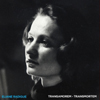 There are a number of significant omissions in Eliane Radigue's discography, as the sole available medium in the '60s and '70s (vinyl) could not contain her long-form drone works without ruining them by carving them up into multiple parts.  Consequently, this extended epic of ultra-minimalism is just now getting a formal release despite being premiered in 1974.  While its immediate impact is blunted considerably by the 37 years of drone/electronic music evolution that followed it, patient listening reveals a visionary and enveloping work that is unexpectedly timeless.
There are a number of significant omissions in Eliane Radigue's discography, as the sole available medium in the '60s and '70s (vinyl) could not contain her long-form drone works without ruining them by carving them up into multiple parts.  Consequently, this extended epic of ultra-minimalism is just now getting a formal release despite being premiered in 1974.  While its immediate impact is blunted considerably by the 37 years of drone/electronic music evolution that followed it, patient listening reveals a visionary and enveloping work that is unexpectedly timeless.
Transamorem-Transmortem is a single 77-minute piece that was originally intended as an installation, but was debuted at The Kitchen in the spring of 1974.  An actual performance was not possible, as Radigue's instrument of choice was an unwieldy ARP 2500 modular synthesizer (a rare and unusual pick for one’s primary instrument), which was essentially a small wall of dials. Also, her pieces famously tended to take years to compose and required lots of notes and diagrams.  In lieu of "live" performances, Radigue would painstakingly arrange and test speakers until they satisfactorily delivered sound to every inch of the room, then allow a reel-to-reel tape player to perform the piece for her.  I wish I had been there to hear how the audience reacted to something this radically minimal (probably quite well, actually, as Rhys Chatham was the curator at the time).
It is actually difficult to imagine a piece being any more minimal than this and still having people want to hear it, but this turned out to be quite absorbing once I hit upon the perfect combination of volume and focused attention.  Put simplistically, Transamorem-Transmortem is a single droning chord with a slow pulse beneath it and some prickly high-end frequencies above it.  The high-end keeps it from quite being comfortable and my initial impression was that it was all just too static to hold my interest.  I was wrong, of course, but there is no denying that this piece is unapologetically difficult.  It is difficult in the best sense though–I get no sense that Eliane set out to willfully alienate or startle anyone with her bold abandonment of conventional texture, melody, harmony, and rhythm.  Instead, she was just very far ahead of the pack in following her muse into largely uncharted territory.
The secret to appreciating the piece lies within Radigue's own philosophies about what she is trying to do with her music–namely, emulate water.  Transamorem-Transmortem is a sea of sound–it seems like an endless humming if listened to casually, much like a lake looks placid from a distance.  When listened to loudly and deeply, however, a vibrant and immersive microcosmic world of throbs and oscillations comes into focus.  Obviously, a 77-minute analog synthesizer buzz will appeal to very, very few people, but those that have the patience and focus needed to appreciate this will be amply rewarded.  The more I listen to this, the more I am awestruck by how aggressively and confidently Radigue discarded almost all of the things that people generally expect from music in pursuit of something both pure and perversely beautiful. This is music distilled to its very essence.
Samples:
 
Read More
- Administrator
- Albums and Singles
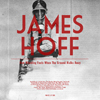 In light of the on-going Occupy Wall Street protests and England's summer riots, James Hoff's single-sided picture disc on PAN feels a little heavier than it otherwise might. Stitched together from various "historic riots," none of which are named, How Wheeling Feels When the Ground Walks Away presents lo-fi crowd roar, chants, guitar solos, breaking glass, and other disobedient noises as the soundtrack to failing systems, desperation, and widespread anger. An audio documentary more than a musical treatment of collective discontent, Hoff captures the anxiety of rebellion and revolt as vividly as any camera could, though its effectiveness might depend on where and how it's heard.
In light of the on-going Occupy Wall Street protests and England's summer riots, James Hoff's single-sided picture disc on PAN feels a little heavier than it otherwise might. Stitched together from various "historic riots," none of which are named, How Wheeling Feels When the Ground Walks Away presents lo-fi crowd roar, chants, guitar solos, breaking glass, and other disobedient noises as the soundtrack to failing systems, desperation, and widespread anger. An audio documentary more than a musical treatment of collective discontent, Hoff captures the anxiety of rebellion and revolt as vividly as any camera could, though its effectiveness might depend on where and how it's heard.
How Wheeling Feels lasts just a brief 19 minutes, but in that time James Hoff subjects his audience to an unnerving racket that is as scary as it is varied. Despite many riots consisting of the same kinds of action, Hoff finds a way to make his material sound distinct throughout, and almost musical. Rhythms and crescendos emerge from contrasting voices and group chanting, moments of shoulder-stressing drama unfold in the sound of crying and unidentifiable explosions, and a common narrative emerges from the prolonged repetition of angry demonstrations and violent events that Hoff either captured or borrowed from elsewhere. The way he layers noise gives the various profanities, sirens, gun shots, car horns, and cheers an added dimension they could never have on the nightly news.
But, no matter how musical the record might be, the emphasis falls squarely on the moods and feelings that pandemonium and disorder create. And since riots are so often the products of injustice, Hoff's album also packs a social and political punch, whether he wants it to or not. I can't listen to this record without thinking about recent headlines or hot topics like class warfare, economic malfeasance, sexual discrimination, and numerous others. Whatever inspires protest, it's looming there in the background, quietly moving the audio along.
James doesn't deliver a judgement on his sounds, though, or if he does, it can't be gleaned from anything in the recording. Sitting at home, listening to the sounds on headphones or cranked up on a good pair of speakers, the sensation I get is more voyeuristic. Playing this record is a bit like reading a history book: there's no avenue into the action the same way there might be, for instance, when listening to an album of improvised music. All the interpretation in the world won't put me into a rioters shoes, which is precisely why I think this piece is best suited for the art gallery in which it was born, or for any public space that would have it. Listening to these sounds out in the open, with other participants, would change the dynamics of the piece entirely. The acoustics would be different, sure, but more importantly a direct symmetry would be drawn between the recorded bedlam, the listener, and all the other people in the room. Instead of just recalling events, the sounds might fill in some very physical blanks and help complete an invisible picture of the space in which they are playing.
But, I'm just speculating. Privately, on record, How Wheeling Feels is uncomfortable and sharp enough; whether it's more immersive or knife-edged in a public place is something only more installations could answer.
samples:
 
Read More
- Administrator
- Albums and Singles
 This third album by Herb Diamante is a collection of the collaborations with a number of great and varied artists. From Sun City Girls to At Jennie Richie, Diamante and his pals cover a wide array of styles and moods. Sad, funny, and deeply weird, this album is as odd as can be without being strange for the sake of strangeness. There is real human tenderness under all schlock and mock horror which makes A Spoonful of Yeast one of those brilliant unhinged pop albums which never get made anymore.
This third album by Herb Diamante is a collection of the collaborations with a number of great and varied artists. From Sun City Girls to At Jennie Richie, Diamante and his pals cover a wide array of styles and moods. Sad, funny, and deeply weird, this album is as odd as can be without being strange for the sake of strangeness. There is real human tenderness under all schlock and mock horror which makes A Spoonful of Yeast one of those brilliant unhinged pop albums which never get made anymore.
Two of these songs have previously been made available as a download only single and another appeared on At Jennie Richie’s recent odds and ends compilation, In A Dream With Poe. Despite my initial misgivings about "Mr. Lonely," Diamante’s take on the song has grown on me greatly. I previously felt that Diamante’s vocals detracted from the Sun City Girls’ beautiful arrangement but I have since come to my senses and realized that Diamante has made the song his own. His Hammer Horror meets Scott Walker voice is ridiculous but it is also full of pathos.
This mix of humor and emotional force is replicated throughout A Spoonful of Yeast where songs about custard rub shoulders with phantasmagorical descriptions of unknown horrors. A camp, Halloween vibe runs through many of the songs; it is easy to imagine Diamante bathed in a green light surrounded by dry ice as he sings his lines. On "Riga" he sets up the scene of an evil creature stalking the night before breaking into a hilarious refrain of "This toilet reminds me of Riga." All through this, Sunburned Hand of the Man provide a shimmering, pastoral psychedelic backing.
As each song only features one constant (that being Diamante’s voice), it would be easy for A Spoonful of Yeast to sound like a bitty compilation. However, as each of the different groups play to Diamante’s tune it means the album sounds incredibly whole. Vibracathedral Orchestra’s droning, seductive music for "Yellow Vanilla Haze" works as well with Diamante’s voice as Diatric Puds’ fuzzy ‘50s rock’n roll vibes. Equally, Diamante alters his delivery to suit those of his collaborators which prevents A Spoonful of Yeast from going sour.
samples:
 
Read More
- Creaig Dunton
- Albums and Singles

With its heavy letter pressed sleeve and short duration, this does feel like the digital equivalent of an old punk 7". Consisting of Dan Colby and Ryan Francini (formally of The Cignal) handling the rhythm section and Fates’ PJ Norman on guitar, these two songs gave me an instant feeling of nostalgia for the early to mid '90s "alternative" scene, before it became known as "indie" and consequently a maligned, pejorative label.
"Foebic," with its rapid fire beats and repetitive bass line creates a very strong rhythmic underpinning, but the noisy guitar treatments for some reason gave an industrial vibe to everything.The result is sort of like early Mission of Burma filtered through the earliest releases on Invisible Records.Somehow it feels very familiar, yet completely new at the same time.
"Cutters" goes less for the dense rhythms and more towards a sparser, song-oriented feel.With an emphasis placed more on the vocals, the result is more "alternative" than "industrial," but carries the same old/new feeling that "Foebic" had.
While these two songs aren't pushing boundaries or re-inventing the wheel, I don’t think that was ever the intention.What’s here is just good old fashioned punk inspired rock that is familiar but never derivative.For anyone who longs for the heyday when Amphetamine Reptile and Touch and Go weren’t just labels, but institutions, this is as inviting as it gets.It’s a terribly short teaser of what will hopefully be more to come.
Read More
- Administrator
- Albums and Singles
 Having abstained from a new Merz release for almost two years, I wasn’t entirely sure what to expect when cracking this disc open. Well, I expected noise at least, for good reason, and I definitely got that. Thankfully, my hopes that the context of this album would make it stand out amongst the ones I have and haven’t heard were not dashed. Recorded live last year as part of a Kurt Schwitters exhibition, Masami Akita puts on a great show that meshes his older "home made electronic instrument noise" sound with his modern "laptop noise" aesthetic.
Having abstained from a new Merz release for almost two years, I wasn’t entirely sure what to expect when cracking this disc open. Well, I expected noise at least, for good reason, and I definitely got that. Thankfully, my hopes that the context of this album would make it stand out amongst the ones I have and haven’t heard were not dashed. Recorded live last year as part of a Kurt Schwitters exhibition, Masami Akita puts on a great show that meshes his older "home made electronic instrument noise" sound with his modern "laptop noise" aesthetic.
While sadly Akita has abandoned his early work with junk noise and tape loops in favor of harsher instrumentation, even that vibe is referenced in this 41 minute set, with competing phased sine wave loops and almost rhythmic cuts between them at the onset.The opening really proved how this was going to combine the best of Akita's styles, with the jerky, almost rhythmic looped noises and wonderfully corroded low bit rate blasts of digital squeal.
Although the early passages seem to take on almost a perverse sense of acid house techno via the analog squelches, Akita is more than happy to add in passages resembling helicopters overhead (a nod to Stockhausen perhaps?) and what could be loops of motorcycle engines, over which it sounds like he’s bashing tin cans and other random bits of garbage.For the purists, there’s also more than enough blasts of filtered white noise to keep them happy.
One of the biggest assets here, other than just the sonic variety, is the use of loops and rhythmic passages.Rather than sounding like the generic "wall of noise" Merzbow that some of his releases are, there is a lot of dynamic build and structure throughout here.While never quite getting to the tight, cut-up loops of Pain Jerk, the longer, repeating segments seem almost to pay homage to the early industrial chaos of SPK or the harshest Throbbing Gristle works.
The constant rhythmic throb also gives an almost hypnotic sense: like an overblown LaMonte Young composition, the repetitive passages locked my attention in, both hearing the rhythmic stuff and the other improvised sounds around it.That is, I feel, one of the characteristics of a great noise recording.While many decry it as just random distortion and feedback, a really good album will shape that into something that demands one’s focus.I’ve heard many a noise album that I find myself tuning out, but that didn’t happen once here.
It does seem fitting that Akita put on one of his best performances in recent memory in tribute to Schwitters, the Dada artist that not only inspired his approach to music, but also gave him his namesake, from the sculpture Merzbau.Even without any sort of thematic relevance though, I’d rank this among not only Merzbow's best work in recent years, but I would also place it on a short list of his best releases since the project’s inception.
samples:
 
Read More
- Administrator
- Albums and Singles
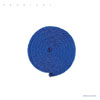
Dominick Fernow has always been a polarizing figure in the noise scene: people either obsessively buy every limited tape he puts out, or they like to rant about him and his label on various noise message boards. So upon hearing that this album was going to be even more divisive than anything has yet released, my interest was definitely piqued. After hearing it a few times, it’s different, and yet not completely out of character in his discography.
 
I honestly wasn’t sure what to expect based upon the first two tracks that were released from Bermuda Drain."Many Jewels Surround the Crown," released as a Record Store Day 7" (and reviewed here) opens this album in a skewed, but still familiar way.While the level of restraint on that track was apparent, it also wasn’t drastically removed from some of the tracks on Pleasure Ground or And Still…Wanting.Here it seems to have even more polish, focusing more on the ambient synths and Fernow’s spoken word, with seemingly more of the noise stripped away.
While I didn't think that was completely unexpected, the second track, "A Meal Can be Made," which was released as a free MP3 a few weeks ago, is a different story entirely.I wondered how Fernow's time in Cold Cave might affect his other projects, and I think it's quite obvious here.It instantly reminded me of early Skinny Puppy with its abrasive, but still melodic layering of keyboards and stiff, mechanical rhythms, which is a good thing.However, the vocals were another matter entirely.Alternating between black metal screams and grindcore growls, the voice seems out of place.In my opinion, the "cookie monster" vocals can work in noise and the various permutations of metal because the dissonance surrounding them in the music creates a whole greater than the sum of its parts:it becomes an even uglier mess.When those vocals are pretty much alone and laid atop what really amounts to an aggressive synth pop track, they sound a bit silly.
So, I wasn't sure what to expect when I got my hands on the full album, it was either going to be a more fleshed out take on Fernow's previous work, or a misguided attempt at crossing over into "music".Thankfully the former is a better descriptor for the album, because the rest of the tracks here are far better than "A Meal Can Be Made."
There is one other track that has that whole Skinny Puppy/Rape & Honey era Ministry vibe to it, "There Are Still Secrets," which feels a whole lot more coherent as a song.Fernow is still screaming and barking the vocals, but the delivery fits better in the context of the song, and it doesn’t seem to jump around structurally as much as "A Meal Can Be Made" did.
Somewhere between mid 1980s industrial and ambient is "Let's Make A Slave," which turns down the aggro thrash but retains the bleepy synths and stiff rhythms.The title track and "Palm Tree Corpse" sound more like the dour, keyboard heavy Prurient stuff as of late, the latter throwing some of his usual screams on over its rather pretty ambient layers.When Fernow goes the spoken word route with his vocals, like on these two tracks, I think it works pretty well, especially since the pitch shifting and heavy effects are stripped away here
It’s only "Watch Silently" and, to a lesser extent, "Sugar Cane Chapel" that sound like the Prurient of yore, the former a mess of hyper-kinetic noise and feedback, and the latter taking the more keyboard-focused sound and covering it in layers of reverb and distortion.
I'm honestly not sure what to think about Bermuda Drain, because on one hand, it sounds like Prurient, but a more polished and developed one.Which is what is perplexing.To me, a "polished" Prurient is almost an oxymoron, and somewhat the antithesis of the lo-fi, seedy vibe associated with most of the releases, in all their Xeroxed and hand-dubbed glory.While other releases such as the Cocaine Death compilation were very professionally packaged and presented, the sound on the disc was still ugly and abrasive.Here it all has a professional gleam to it, which I wasn’t really expecting.
Fernow has certainly evolved into something beyond the feedback and harsh noise, but it is extremely hard to pin down. There definitely is some bleed over from his work with Cold Cave, and especially his Vatican Shadow side-project, but Bermuda Drain feels different than anything else he has done, regardless of the moniker used.Admittedly, I was hoping he would integrate a bit more of the black metal guitar sound that the alternate version of "Many Jewels Surround the Crown" 7" demonstrated, but not this time.As it stands, I can see how the hardcore noise crowd will hate this, but for people with more eclectic tastes, there's a lot here to deconstruct.
samples:
 
Read More
- Administrator
- Albums and Singles
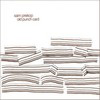 If I could think of any condition that exemplified life today, it would be distraction. Even the most contemplative life is arrested by a thousand nagging interruptions. For my part, I was especially distracted while reviewing Old Punch Card, constantly turning away from the work to read some random article or watch some Internet video. Nothing peculiar about that, I’ll admit, but then I realized how well the album evokes distraction as a state of mind. It’s the sound of our own attention scattering into the ether.
If I could think of any condition that exemplified life today, it would be distraction. Even the most contemplative life is arrested by a thousand nagging interruptions. For my part, I was especially distracted while reviewing Old Punch Card, constantly turning away from the work to read some random article or watch some Internet video. Nothing peculiar about that, I’ll admit, but then I realized how well the album evokes distraction as a state of mind. It’s the sound of our own attention scattering into the ether.
The ponderous nature of Old Punch Card is apparent right from the beginning. Thin sheets of static flow from the speakers, pitching up and down. Lopsided gurgling loops appear, and then a buoyant, appreciated synth melody, which drifts lazily for the remaining length of the piece. All of this happens within the first few minutes, creating a pleasantly disorienting mood that lasts throughout the entire album.
Old Punch Card is full of musical non-sequiturs, bits of sound disjointed from the sounds that preceded it. This makes it difficult to describe without going on endlessly about its particulars. It resists any sort of general categorization. Ambient? Sort of. Noise? Yes, but not really. Conceptual? Who knows?
Part of the difficulty is that Prekop never stays with one sound for very long. While the tempo stays leisurely throughout the album, each fragment sounds so distinct that the music always seems in a state of constant flux. In "November December," for example, crackling loops are replaced by gentle guitar picking, which is followed by a growling synthesizer drone, which is followed again by ascending synth arpeggiations. And so on and so on. None of these transitions are violent, but taken together over the album’s length they have a curious, mind erasing property. After I’m finished, I’m always at a bit of a loss to explain what I’ve listened to.
While Old Punch Card is engaging, there is something a bit too heady about its musical circumspection. Every song is like a Zen koan set to music, with the listeners being some kind of metaphysical detective. Prekop throws in all sorts of stylistic U-turns, and it is this playful misdirection that evokes being distracted so well. Yet the whole thing feels more like a puzzle than a mystery, with about as much drama and danger as a day spent browsing the internet. As for me, I prefer my pleasures to be a little more earthly.
samples:
Read More


